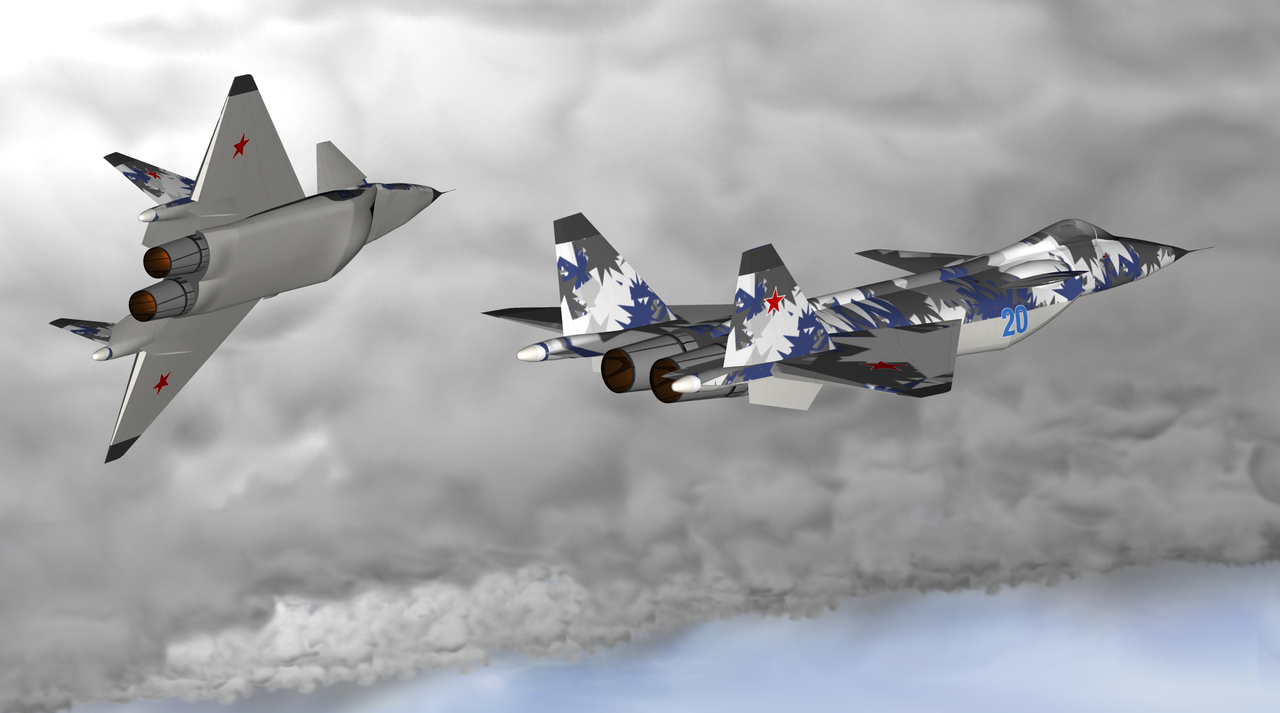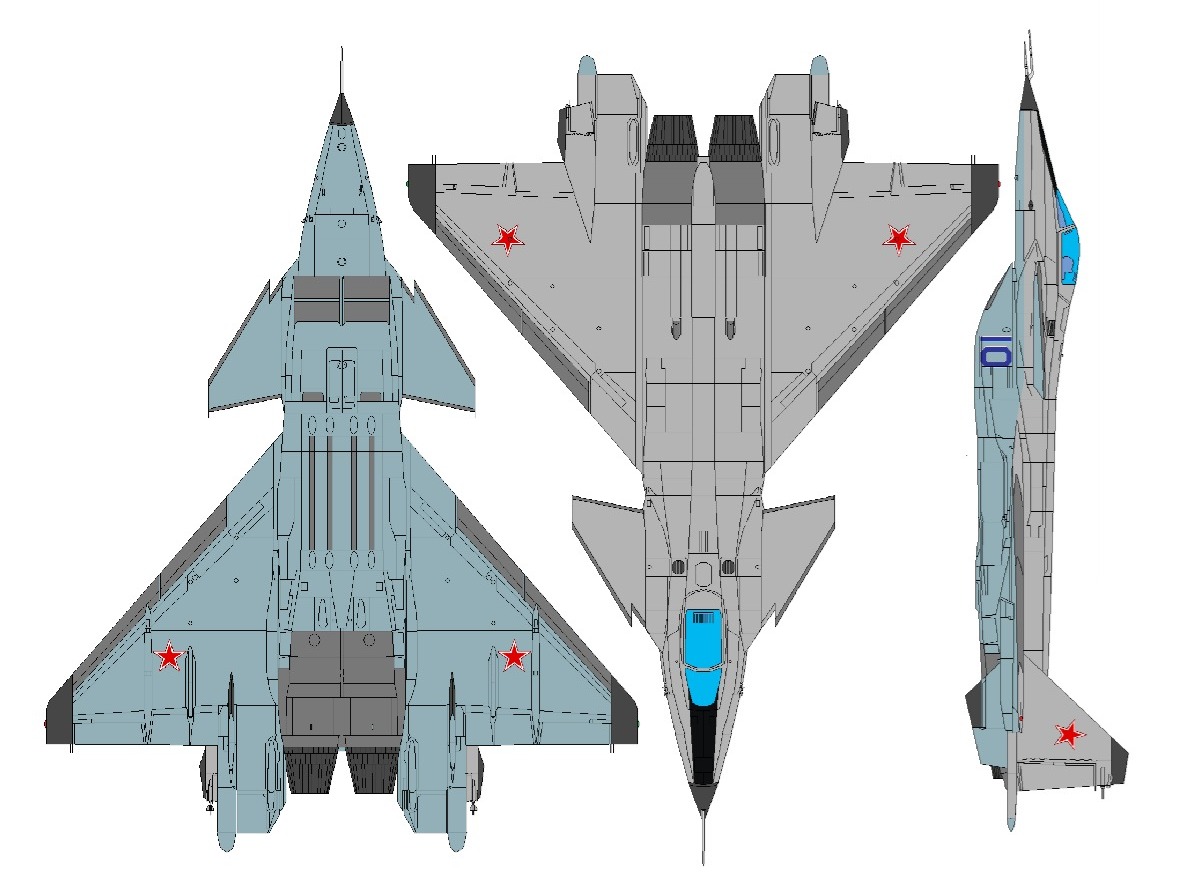Russian Raptor! Designed To Fight US F-22 & Copied By China For J-20, Why Moscow Junked Its MiG-1.44 Fighter?

The American F-22 Raptor is a formidable fighter jet. The first 5th-generation fighter jet is operated only by the US and has not even been shared with the country’s allies. To match Lockheed Martin’s F-22 ‘Raptor,’ the Soviet Union began a project that resulted in MiG 1.44 and the features of the Soviet dream aircraft were incorporated by China in its J-20 fighter jet.
The F-22’s advanced capabilities make it one of the most expensive fighter aircraft ever produced. Each unit costs $150 million, excluding research and development costs. F-22 was designed to replace the aging fleet of F-15 and F-16s in the USAF fleet. On June 17, Lockheed Martin announced that the USAF’s F-22 Raptors had reached 500,000 flight hours.
But, the design of Soviet-Russian MiG 1.44 remained on paper. At least on the drawing board, the aircraft had the perfect combination of stealth features and excellent maneuverability.
The Soviet aircraft manufacturer MiG was selected to design the 5th generation Multi-Role Tactical Fighter in 1983, around the same time the US started work on its Advanced Tactical Fighter, which resulted in the F-22.
AfriPrime App link: FREE to download...
https://www.amazon.com/Africircle-AfriPrime/dp/B0D2M3F2JT
Concurrently, the Sukhoi aircraft company was working on the prototype of another 5th-generation aircraft, which resulted in the forward-swept-wing S-32 experimental aircraft, which was rechristened the S-37 and then the Su-47. The prototype’s first flight was in 1997, and this resulted in the PAK FA.
Meanwhile, the MiG could fly the prototype of its 5th-generation fighter jet in 2000, but the project was delayed by nine years due to funding constraints. Only two test flights were conducted before the project was shelved. The project was shrouded in secrecy and eventually trashed, and Sukhoi was given the go-ahead to develop the PAK FA.
It was only in 2015 at the International Air Show in Moscow that the MiG 1.44 prototype was unveiled in public, giving the experts a glimpse into the warbird that it could be. True to Russian philosophy the aircraft was meant for close fights.
The MiG-1.42/.44 concept plane was designed to reach a top cruising speed of about Mach 2.6. It could also fire missiles backward to win dogfights against American warplanes. It was designed to have an internal weapons bay, but the prototype lacked it.
The aircraft was just over 71 feet long and had a wingspan of 55 feet and nine inches (17 m). It resembles another famous jet fighter under development around the same time—the pan-European Eurofighter Typhoon. It is even said that China’s first stealth jet, the Chengdu J-20, borrows heavily from the MiG 1.44 design.

In an interview with the Russian state-owned news agency Sputnik, a Russian defense commentator pointed out similarities between China’s Chengdu J-20 and the MiG 1.44.
“In my opinion, the machine is based on the Russian MiG 1.44. That plane was created to compete with the PAK FA at the preliminary design stage and made its maiden flight in 2000. The Chinese plane is very similar,” the commentator explained. Both MiG 1.44 and J-20 have similarly styled delta wing canard configurations and a V-shaped tail section with closely mounted engines.
“Although it hasn’t been announced officially, the J-20 uses our AL-31F engine, developed by Salut, which the Chinese bought for half a billion dollars,” he added.
The single MiG 1.44 prototype could fly up to 1.5 times the speed of sound without the use of the afterburner, an ability called super-cruise, with a service ceiling of 56,000 ft (17,000 m). The aircraft, at least on paper, had an impressive arsenal of R.77 semi-active, air-to-air missiles, R-73 short-range heat-seeking missiles, and R-37 long-range hypersonic air-to-air missiles. If all else failed, a single Gryazev-Shipunov GSh-30-1 autocannon could take care of targets up close.
AfriPrime App link: FREE to download...
https://www.amazon.com/Africircle-AfriPrime/dp/B0D2M3F2JT
The 5th generation fighter was big on stealth technologies to avoid being seen on the radar. The stealth technologies work on two things – reducing reflection or emission of radar signals. The plan was to coat the 1.44 had “radar absorbing material” to help it elude the radars. To reduce the weight of the aircraft special material was used in airframe and wing construction.
The airframe’s radar ‘hotspots’, like the wing edges and engine intakes, were given special attention. Hence, MiG-1.44 engine intakes were curved. The ‘serpentine’ intakes were designed to bounce the incoming radar signals at them and hopefully deflect them, altering the radar signature.

MiG 1.44 – Russia’s “Super Fighter”
Even though the lack of funds shut the program down, experts have questioned the extent of stealth in the MiG 1.44. The fighter jet has canards; the little ‘winglets’ are usually just aft or below the cockpit to give additional lift to the aircraft in certain flight situations. Called the control systems, the canards are incompatible with stealth as they amplify an airframe’s radar signature.
Its counterpart, the F-22, reduces its radar signature by minimizing the radar reflection from control surfaces like wings and tail assembly. From a head-on position, the F-22’s tail assembly is not visible and is ‘hidden’ behind the wings, reducing the number of surfaces that would be visible to radar.
Contrary to this, when the MiG-1.44 is viewed from the front, the two canards are not on the same horizontal plane, creating a bigger radar signature. The fighter had prominent pylons on its wings for fitting weapons or fuel tanks, further compromising the jet’s stealth. Even the F-35 can optionally carry fuel or ordinance on its wings, but when not in use, the pylons are removed so as not to reduce its stealth.

“The entire aircraft (MiG 1.44) appears to have been built with sharp edges, protruding structures, and angular shape, raising questions about just how stealthy it was intended to be. It looks like it has weapons pylons or small structures under the wings, some of which, at the very least, impair the smoothness of the plane’s exterior. An F-22, by contrast, shows what looks like a purely internal weapons bay, something naturally considered imperative for stealth,” American military expert Kris Osborn wrote about his impressions of the aircraft.
AfriPrime App link: FREE to download...
- Questions and Answers
- Opinion
- Story/Motivational/Inspiring
- Technology
- Art
- Causes
- Crafts
- Dance
- Drinks
- Film/Movie
- Fitness
- Food
- Игры
- Gardening
- Health
- Главная
- Literature
- Music
- Networking
- Другое
- Party
- Religion
- Shopping
- Sports
- Theater
- Wellness
- News
- Culture
- War machines and policy

